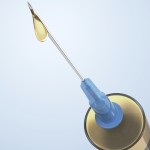
Before you have any injection filler treatment to the face, know exactly what type of filler is going to be used…..and why. I find that many patients who have had injectable filler treatments before can not tell me what was used. While the scientific composition of the material is not really important to the patient, what was used and how did it work or how long it lasted is important for future injectable filler treatments, whether it is done by the same or different physician injector.
In general, the vast majority of injectable filler treatments are done in either the lips or the nasolabial folds (cheek-lip grooves). Unlike Botox® injections which is done over a broader surface area, injectable filler treatments are more specific to one area that is well-defined. Most patients do have a good recollection as to what areas were filled.
One of the best benefits of injectable filler treatments, and an expected outcome, is that the benefits of the injections (unlike Botox®) will be immediately seen. However, it is important to understand that no filling treatment is permanent. Injection treatments will have to be repeated based on the expected length of time the filler will last for the results to be maintained.
The most common adverse result from an injectable filler treatment, albeit it only temporary, is that the result may be over- or undercorrected or it may not be perfectly smooth and even. Injecting fillers is an art form and not an exact science. Also, there may occasionally be some bruising in a small area or two. Very rarely, it is possible that one may have a localized allergic reaction to the material which appears as redness and swelling. This may go away on its own or could require some steroid injections if it persists.
Lastly, each injectable filler is charged based on a full syringe cost. That is an easy number to know before treatment by asking…and it should be told to you without asking. Some practices charge you for a full syringe whether you use it or not. Others only charge by the amount of the syringe used. Ask what the practice policy is in advance.
Dr. Barry Eppley
Indianapolis, Indiana


